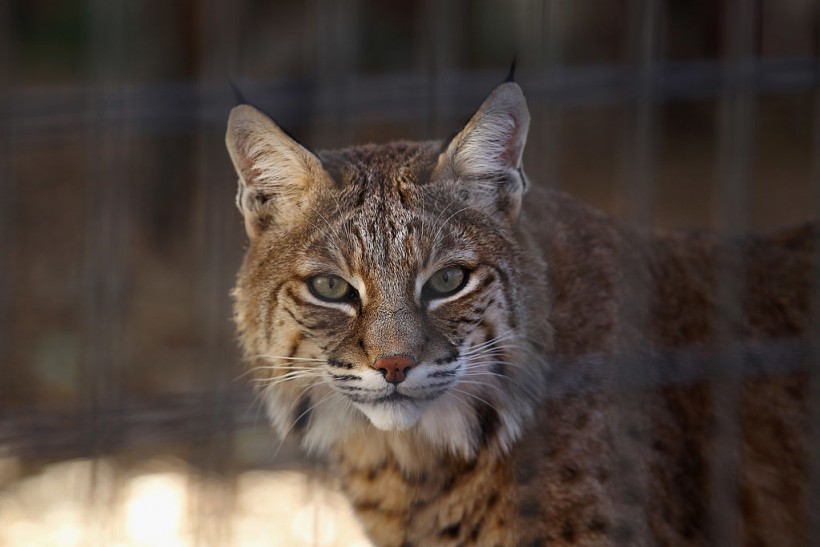A new study reveals that carnivores living near humans get up to half of their diets from the same food as humans, threatening the ecosystems dominated by carnivores in North America.
Ecologists from the University of Wisconsin-Madison conducted a study on the diet of seven carnivorous animals from the United States' part of the Great Lakes Region. Researchers gathered bone and fur samples, which they subjected to chemical analysis. Collected specimens covered different parts of the region - from national parks to major cities like Albany in New York.
In a report published in the Proceedings of the National Academy of Sciences on Monday, October 12, the researchers found out that the closer these predatory animals lived near human settlements - like cities and farms - the more human food they consume.

A rescued bobcat waits to be fed at The Wild Animal Sanctuary in Keenesburg, Colorado.
Human Presence Disturbing Trophic Niche
In their study, researchers noted the essence of Niche theory in ecology, positing that "species must limit overlap in the use of space, time, or resources to minimize competition." However, the presence of humans has contributed to the rapid change of ecosystems, including the dietary availability in these areas.
Researchers explained that the species involved were specifically evolved to compete for the resources they need and that the newfound reliance on common food sources could put them in conflict. This scenario could change the established relationships between predators and prey in an ecosystem, with uncertain yet possibly detrimental effects.
RELATED: New Study Offers Insight on Human Impact on Mammal Extinction
The study was led by Jon Pauli, professor of forest and wildlife ecology at UW-madison, and his former student Phil Manlick. In the study, researchers included predators like the gray wolf (Canis lupus), coyotes (Canis latrans), gray fox (Urocyon cinereoargenteus), and the fisher (Pekania pennanti).
They gathered bone and fur samples, with assistance from state and federal researchers as well as citizen scientists. Researchers compared the composition of diets among these species and observed its relationship to the human presence in the area. The specimens - bone and fur - can offer an insight into the animal's diet through carbon isotopes. Human foods are distinct from naturally hunted meals since these are heavy in corn and sugar content, which reflects in the carbon traces from the collected specimen.
Wildlife Diet From Human Food Sources
As to the share of the diet of these predators taken from human food, it varies depending on location, with up to 25 percent in areas with the most human presence. Additionally, this behavior also varied between species observed. For example, the bobcat (Lynx rufus), the only obligate carnivore - or whose diet specifically requires meat - consumed relatively small amounts of human food, even in places with increased human disturbances.
However, Manlick explained that the data presents "the sort of generalist species that you might expect," citing coyotes, foxes, martens, and fishers in places near people. He noted that these species get more than half of their diet from human foods.
RELATED: 200-Million-Year-Old Teeth Suggest First Mammals Lived Like Reptiles
Researchers also discovered that the reliance on human food sources also increased the instances of overlapping between the diets of these animals. They noted that aside from increased conflicts between animals, their reliance on human food might also make them more vulnerable to human attacks, as well as entirely changing their hunting strategies which affect the local ecosystem.
Check out more news and information about Ecology in Science Times.














